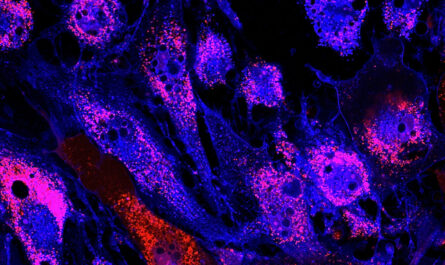Cell cryopreservation refers to the process of preserving viable cells at ultra-low temperatures, typically in liquid nitrogen at around -196°C. At these low temperatures, any biological activity including cell metabolism is effectively stopped, allowing the cells to be stored for extended periods while maintaining their viability once thawed for future use. Some of the key applications of cell cryopreservation include preservation of stem cells, gametes/reproductive cells, cell lines, and other human and animal cells.
Purposes of Cell Cryopreservation
Some of the main purposes of cell cryopreservation technology include:
– Preservation of Stem Cells: Stem cells have immense potential in regenerative medicine and tissue engineering. Cell cryopreservation allows long-term storage and future use of stem cells for transplantation, research and therapeutic purposes. This includes preservation of adult stem cells as well as harvesting and storage of umbilical cord blood stem cells.
– Fertility Preservation: Oocytes and semen can be cryopreserved for many years to preserve fertility potential for later use such as for cancer patients who may lose reproductive function due to chemotherapy or radiation therapy. Egg/sperm banks also use cryopreservation to store gametes for assisted reproduction purposes.
– Cell Line Preservation: Researchers use cryopreservation to maintain viable cell line stocks in cell banks for distribution and future experiments. This ensures continuity of critical cell lines even after decades.
– Organ/Tissue Preservation: Cryopreservation offers possibilities for short to medium-term storage of organs, tissues and composite tissue allografts until transplantation. This could help address organ shortage issues.
– Veterinary Applications: Cryopreservation finds wide use for storage of semen, oocytes and embryos in animal breeding programs as well as preservation of cell lines supporting veterinary vaccine development.
Cryopreservation Techniques
The most common cryopreservation technique involves controlled slow freezing or vitrification methods. Both aim to minimize intracellular ice formation which can damage and kill cells:
– Slow Freezing: Cells are cooled at a controlled rate (1°C/min) in cryoprotective agents like dimethyl sulfoxide which penetrate cells. Ice forms extracellularly during cooling. Thawing is done slowly as well.
– Vitrification: Uses higher concentrations (≥30–50%) of cryoprotectants and ultrarapid cooling rates (≥10,000°C/min) using specialized devices. Ice crystal formation is negligible due to extreme viscosity increase within cells. Thawing too is rapid.
Other techniques include slow cooling, dehydration-rehydration, and lyophilization. Choice depends on cell type, purpose, and equipment availability. Vitrification is increasingly common due its higher post-thaw cell viability compared to conventional slow freezing protocols.
Challenges in Cell Cryopreservation
While cryopreservation is indispensable for long-term storage of viable cells, several challenges still remain:
– Toxicity of Cryoprotective Agents: Cryoprotectants like DMSO can be toxic to cells depending on concentration and exposure time. Balancing protective and toxic effects continues to be optimized.
– Osmotic Stress: Cell volume changes during addition/removal of cryoprotectants cause osmotic stress. This, along with ice formation especially in conventional slow freezing, damage cellular integrity.
– Storage Containment: Liquid nitrogen cryogenic storage introduces minuscule possibility of temperature variations affecting cell viability. Novel containment and monitoring systems minimize such risks.
– High Cost of Storage: Long-term liquid nitrogen storage facilities and recurring replenishment costs pose economic challenges, especially for cells/tissues meant for clinical use on a large scale.
– Thawing Injuries: Uniform and consistent thawing profiles need further standardization to prevent additional stresses to cells post-cryopreservation.
Future of Cell Cryopreservation
Advances continue to expand applications of cell cryopreservation:
– Umbilical Cord Blood Banking is growing globally due to realized benefits of long-term hematopoietic stem cell preservation for autologous/familial use.
– Organ Cryopreservation research focuses on techniques preventing ice damage for prolonged vascularized organ storage well beyond hours.
– 3D Bioprinting combined with cryopreserved cell/tissue inventory could transform regenerative therapies customized for each patient.
– Automation and closed-system devices make cryopreservation procedures more scalable and standardized across research/clinical settings.
– Cryobiological understanding of intracellular processes during freezing/thawing will aid developing better, less toxic cryoprotectants and procedures
Cell cryopreservation is a vital biotechnology facilitating applications ranging from fertility preservation and stem cell-based therapies to biobanking and animal breeding. Continued innovations aim to enhance post-thaw cell viability while reducing costs of this long-term storage method.



